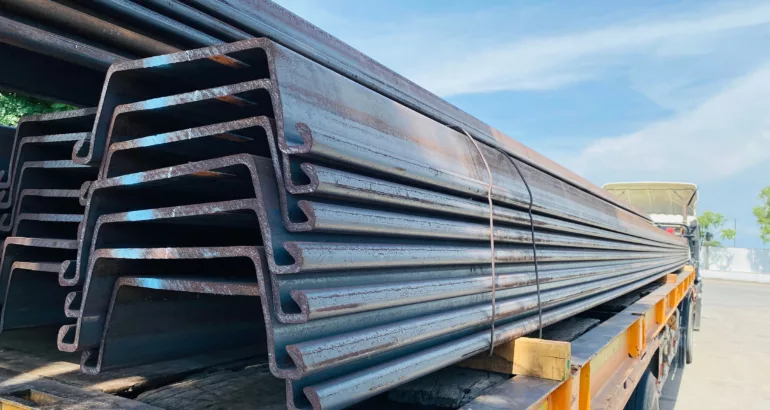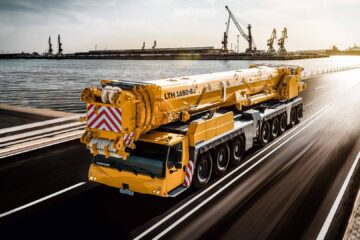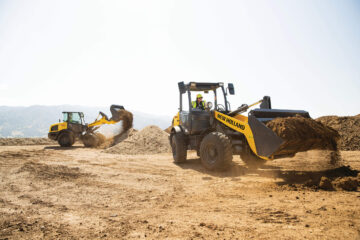A J.D. Field Primer
Steel sheet piles are one of the most versatile geostrucutral elements designed for both temporary and permanent applications in heavy highway, transportation and marine foundations. There are two types of steel sheet pile production; cold formed and hot rolled.
Cold Formed Sheet Piles
Cold formed sheet piles are produced downstream of the steel-making process with coils that have already been melted and rolled. The metallurgy, grade and mechanical properties are inherent to the coil material. The coil is shipped to the cold former where they unravel and trim/prep the edges of the coil for production. Once trimmed, the coils are run through the cold forming line with a series of 12 or more forming passes. With each successive pass, the flat coil is bent/formed to take shape to eventually take on the finished “U” or “Z” section. Cold form sheets come in a variety of light to intermediate ranges with wide, efficient strength-to-weight characteristics.
Because they are produced from a flat coil with uniform thickness, the web and flange and entire section are uniform. The hook & grip interlock connection is a two-point contact, for watertight and or multiple braced conditions, these characteristics could be a design limitation.
Hot Rolled Sheet Piles
Hot rolled sheet piles are produced by the same steel mills that melt and cast coils and long steel products. They are produced from continuous cast beam blanks or billets. The raw stock is run through a reheat furnace to get the temperature up over 1600 degrees so they can be rolled. Then sent to the rolling mill where they will pass through the roughing, intermediate and finishing stands making 3-4 passes at each stand. This custom roll pass design allows for differential thicknesses, especially in the shoulder transitions. this is added steel that helps the section resist buckling from bidirectional/transverse loads that are not always calculated. But it is the finishing stand where the most difficult part of the sheet pile takes shape; the interlock. The intricate geometry and locking characteristics of a hot rolled interlock and dimensional tolerances are so tight, the window for error is so small that if not executed, the rolling could be a total loss. This is why less than a dozen steel mills in the entire world attempt to hot roll sheet piles. Hot rolled sheets come in “U” & “Z” and flat shapes, but flats are designed for cellular membrane/tension applications.
Hot rolled sheet piles go back over 120 years getting their start with “U” and flat sections, but in more recent years the efficiency of the “Z” section has taken over and is dominating the global market. This is again a function of strength to weight efficiencies, where the “Z” series tend to have deeper, wider, lighter sections compared to “U” piles.









